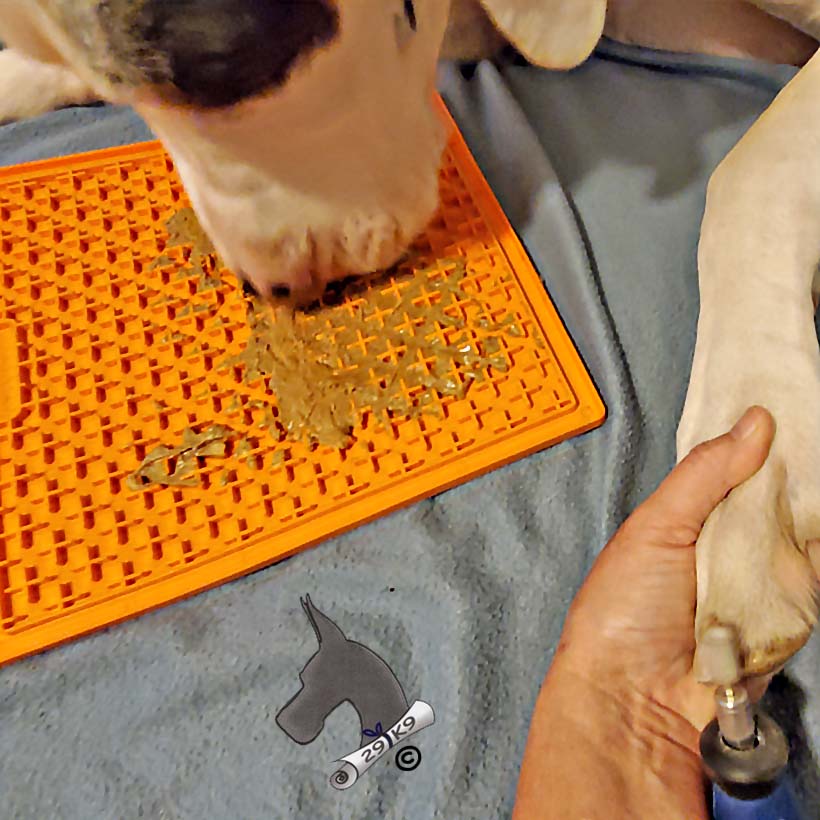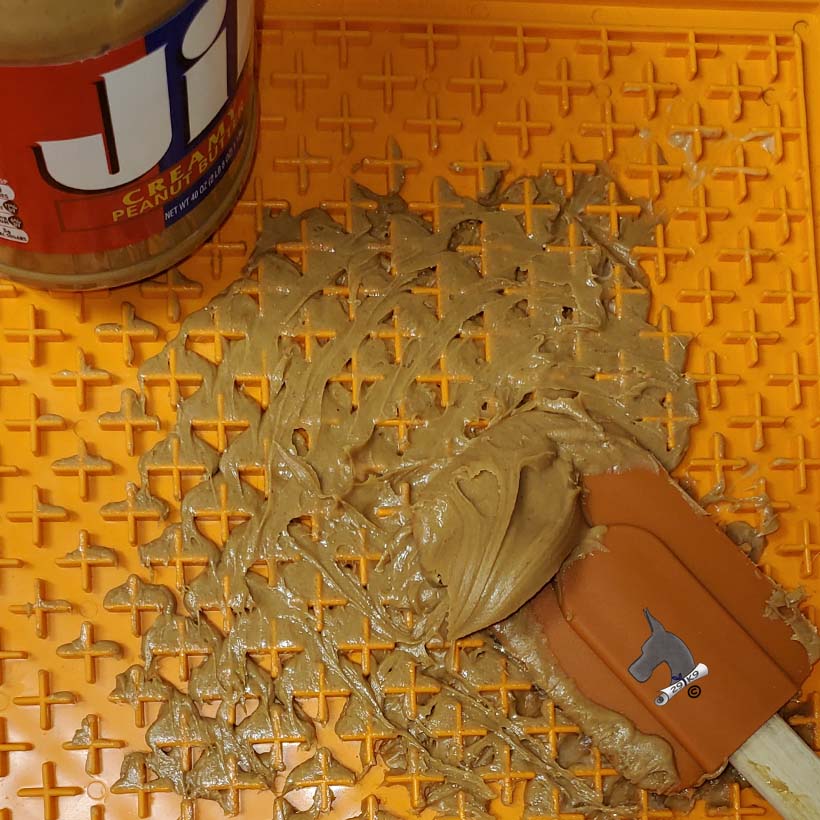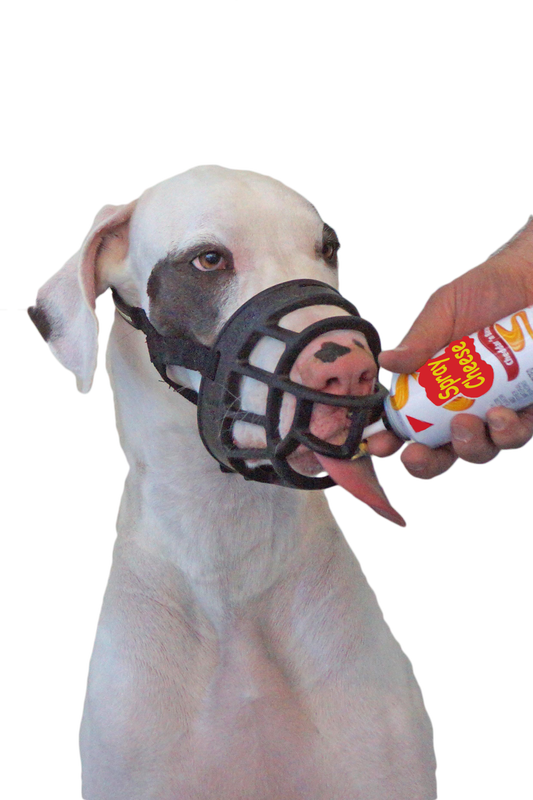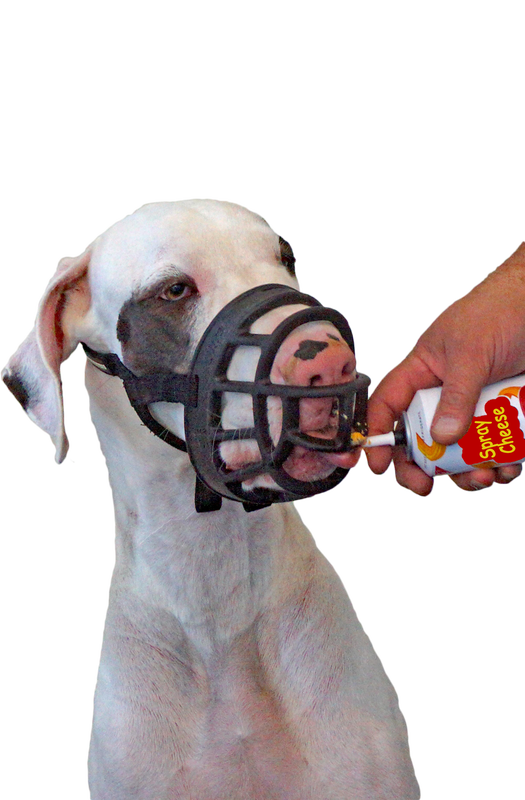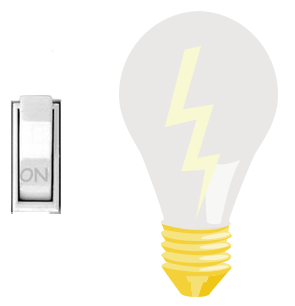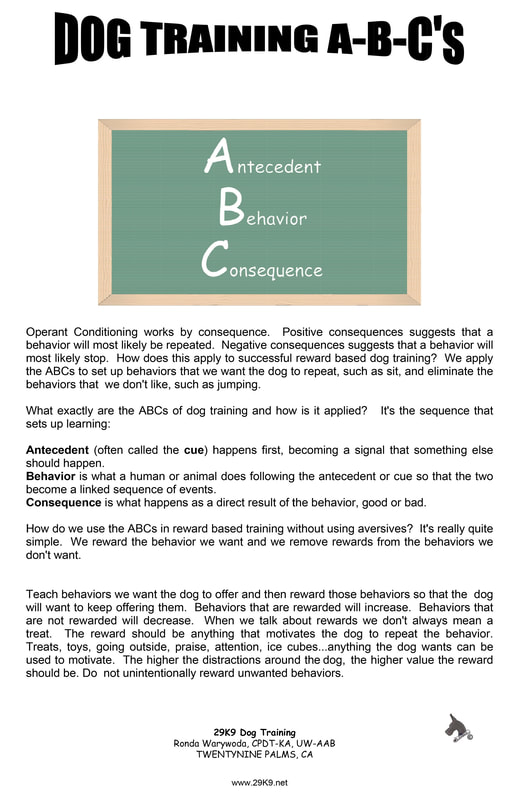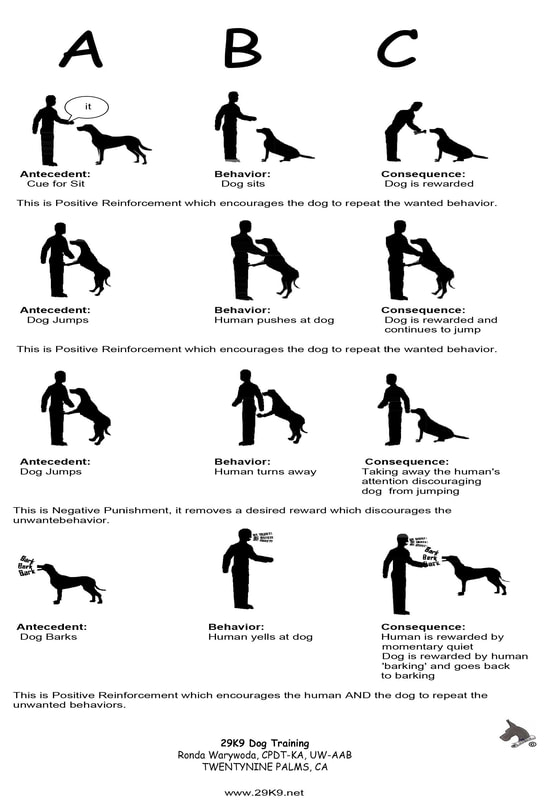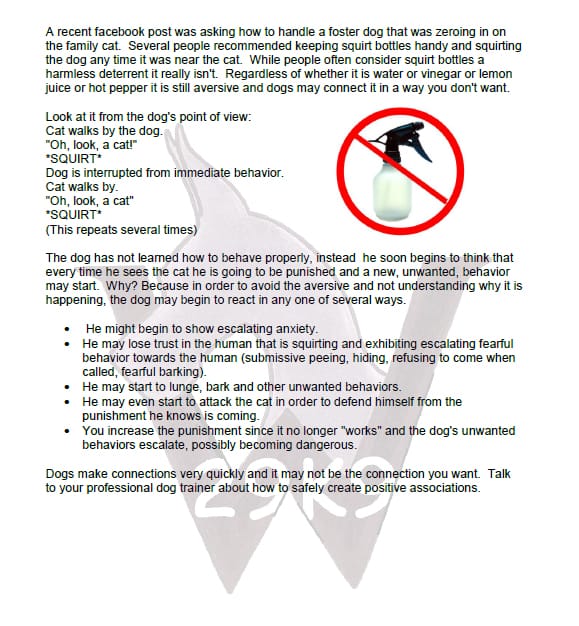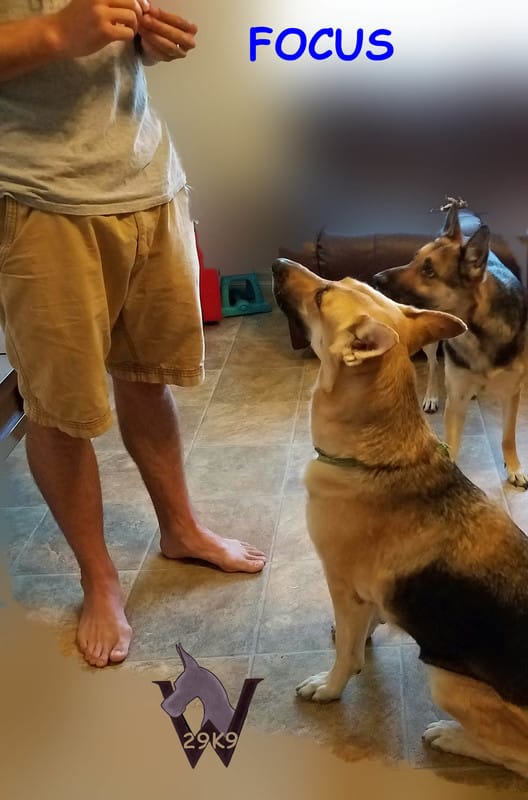|
One of my hardest challenges as a dog owner is trimming the nails. I'm always nervous that I'll get the quick and that nervousness makes the dogs antsier. Not to mention how hard it is for me to exert enough pressure to clip a Great Dane's nails.
Zoinks breeder has been showing off how easy it is to dremel dog nails so I finally broke down and got the right bit and have been conditioning Zoinks to let me dremel her nails. This started slowly, first with the dremel off and then gradually increasing the speed (and noise) before ever touching the nails. I've now done a few sessions with her and it's gone amazingly well so we are now conditioning the others to it. To make a positive association with the dremel we use a lick mat smeared with peanut butter (make sure it doesn't have xylitol in it). Just use a small amount, smeared on the mat, and then chilled it goes a long way. You could also use plain yogurt, cheese, liver wurst or even canned dog food.
0 Comments
Dogs wear muzzles for many different reasons, not just aggression.
Why is it a good practice to teach a dog to wear a muzzle? Putting a dog into a situation where they are already uncomfortable and then adding the never-before-worn muzzle adds even more stress to the situation. This means their next experience with training, at the vet or groomers will be even more stressful. My dogs are all muzzle trained. Over the past couple of years our Desi has had a lot of vet visits due to skin issues. As the vets and vet techs are climbing over this 150 pound Great Dane to examine and obtain scrapings and biopsies they need to feel safe in order to give him the best care. I am not offended and actually offer to muzzle him. I want to make sure he's getting the best care but I don't want him stressed out, either, since that can make his issues worse. We start muzzle training early. We show them the muzzle, let them sniff and check it out, giving them treats. Then we put treats in the muzzle so they can put their faces in to get the treats. Once they are consistently putting their snouts in by their own choice we add the strap. Then we secure it, very briefly, with a high value squirt of spray cheese added. Gradually they wear it for longer and longer periods of time, adding activities such as going outside or for walks, always keeping it fun with high value treats. Operant Conditioning is learning thru consequence (both rewards and punishments). We learn that if we do one thing, something else will follow. Science has repeatedly shown us that long term, rewards are more successful. Study after study shows us this. A Review of Dog Training Methods: Welfare, Learning ability, and Current Standards, authored by IJ Makowska, M.Sc., Ph.D. for the BCSPCA, she demonstrates thru multiple studies and research just how important making the right choices in training are to a dog’s welfare.
I am going to use a simple example, flipping on a light switch and being rewarded with the light. If we want that light to turn on then every time we must flip that switch to make it happen. This is what we are teaching a dog with positive reinforcement. We do not have to use aversives such as shock collars (or electric, static, whatever you want to call it), prong collars or even high pitched whistles. How would this work, say, if I wanted you to turn on the light but you didn’t know that was what I wanted? Imagine that I put you in a room and wait for you to turn the light on. Then, every time you did something, but that something wasn’t turning on the light, you were punished. You stand up “zap”. You sit down “zap”. You ask what I want “zap”. This is positive punishment. At what point would you become reactive to everything because nothing is working or simply shut down and give up? How did you learn to flip the switch? You saw someone, probably a parent, do it and then did it yourself and were rewarded with the light turning on or off. This is positive reinforcement. How simple is this to do? When a dog is jumping they don’t KNOW this is the wrong behavior. They just know it will get your attention. So we choose the behavior we want them to do and then remove our attention from the jump and teach them that sitting gets them your attention. The dog darts out the door getting freedom and a game of chase. Wait, that’s not what you WANT them to do? Again, we determine the wanted behavior, not darting out the door. So first, we prevent the dart with a baby gate and/or leash and teach them that waiting while the door opens gets a reward. Then we teach them that going thru the door on cue gets a reward. Now the dog is waiting at the door instead of darting. We can even teach them to turn on that light switch by stacking behaviors. Yes, this will take some time, especially if your dog has spent time learning the wrong behaviors. In the end, tho, your dog will be happier and less likely to develop behavior issues. Using science and reward based training methods; this is how we should be teaching our dogs. Teach Rover that he must do certain things in order to get that reward. If he doesn’t do the behaviors that are required then he won’t get the reward. With dogs we cannot explain this to them but we can teach them by demonstrating that every time they make the right choice something good happens. When they make the wrong choice they get nothing. No attention, no yummy treats, no games to play, no snuggle time. Initially, we work on small, simple behaviors such as focus and sit to get rewards. Then we make things a little harder. Sitting and waiting in one place. Add in coming when called. Learning to choose the cooperative behavior in order to participate in the rewards of yummy treats, snuggle time, games of tug of war, going for fun walks. What is THE most underutilized cue? Focus. While it is one of the first new behaviors taught in basic obedience it seems to fade away once sits, downs and stays become our "go to"s. It shouldn't, tho. A solid focus means that no matter the distraction the dog's attention will be on you. It helps develop self control and calmness.
Does your dog have a trigger that keeps him from listening to you? He sees another dog/person/rabbit while on leash and his manners go out the window? With a solid focus when you see the trigger you can ask for his attention until the trigger is gone. Practice focus everywhere. Start with no distractions and then add as many environments as possible until the behavior is generalized (dog trainer speak for a behavior that is consistent everywhere). Start with high value treats initially and big praise. Make sure you always praise or give a life reward when it is successful. Remember, they need a reason to look at you rather than the distraction. At home ask for it randomly while you are watching tv, fixing dinner, reading... Say the dogs name and then ask for focus, using the treat to lure the dogs gaze to yours. Take the behavior from room to room, adding distractions. Have your spouse or child clap, move around, open and close doors. Go outside, in your yard and randomly on walks. As with any learned behavior continue to ask for it randomly, even after it becomes automatic, otherwise may fade and not be there when you need it. |
Ronda WarywodaCPDT-KA, UW-AAB Categories
All
Archives
July 2023
|

